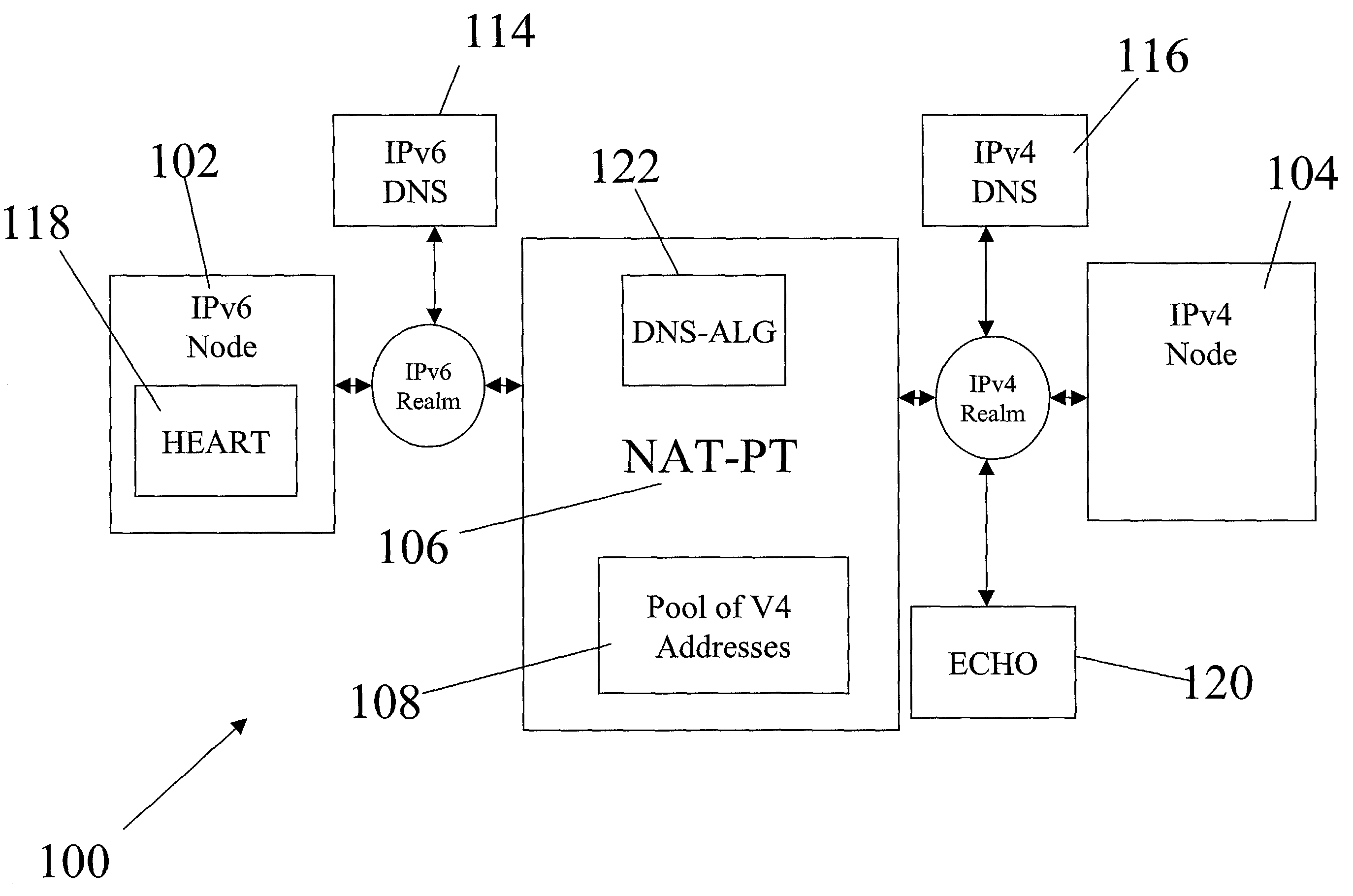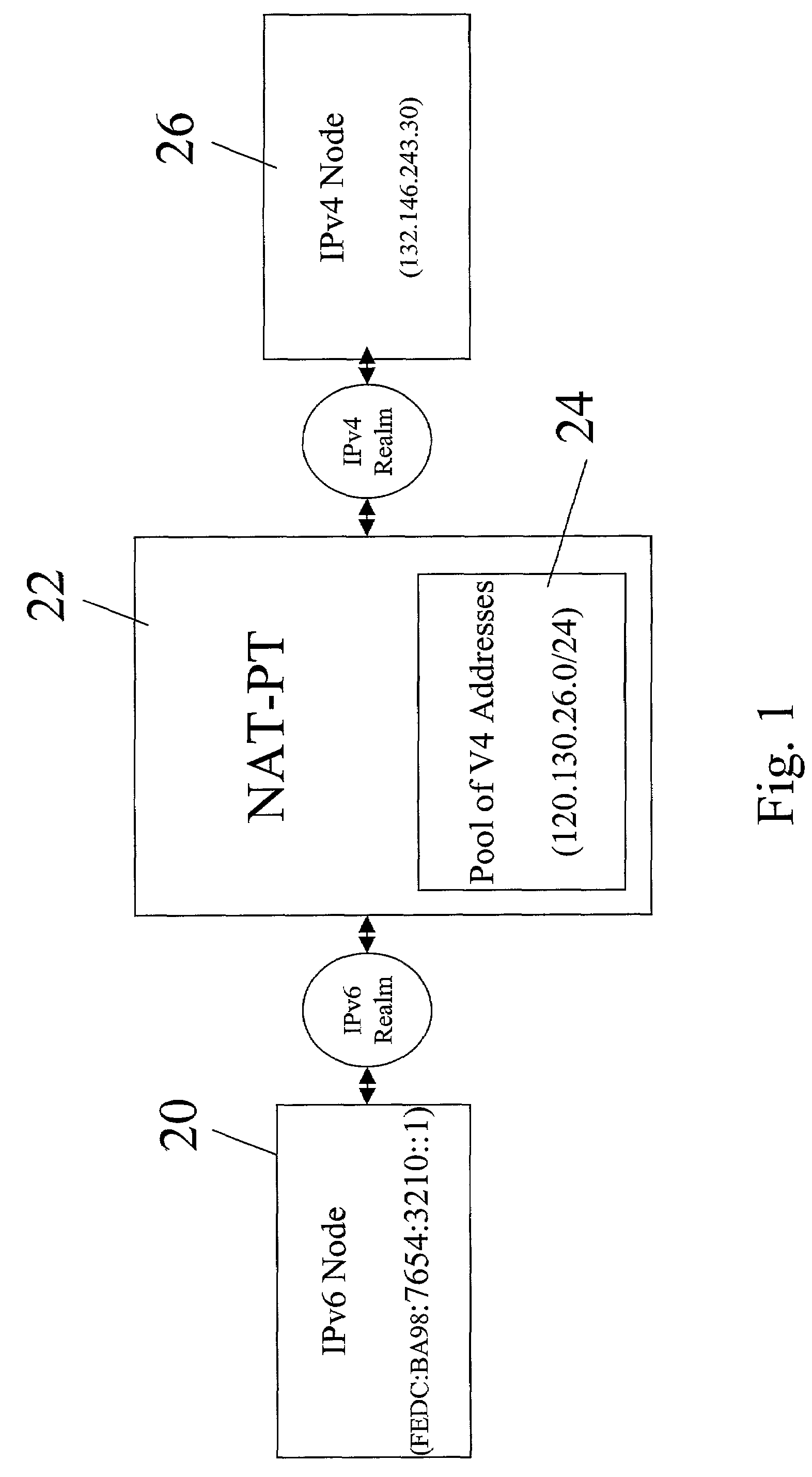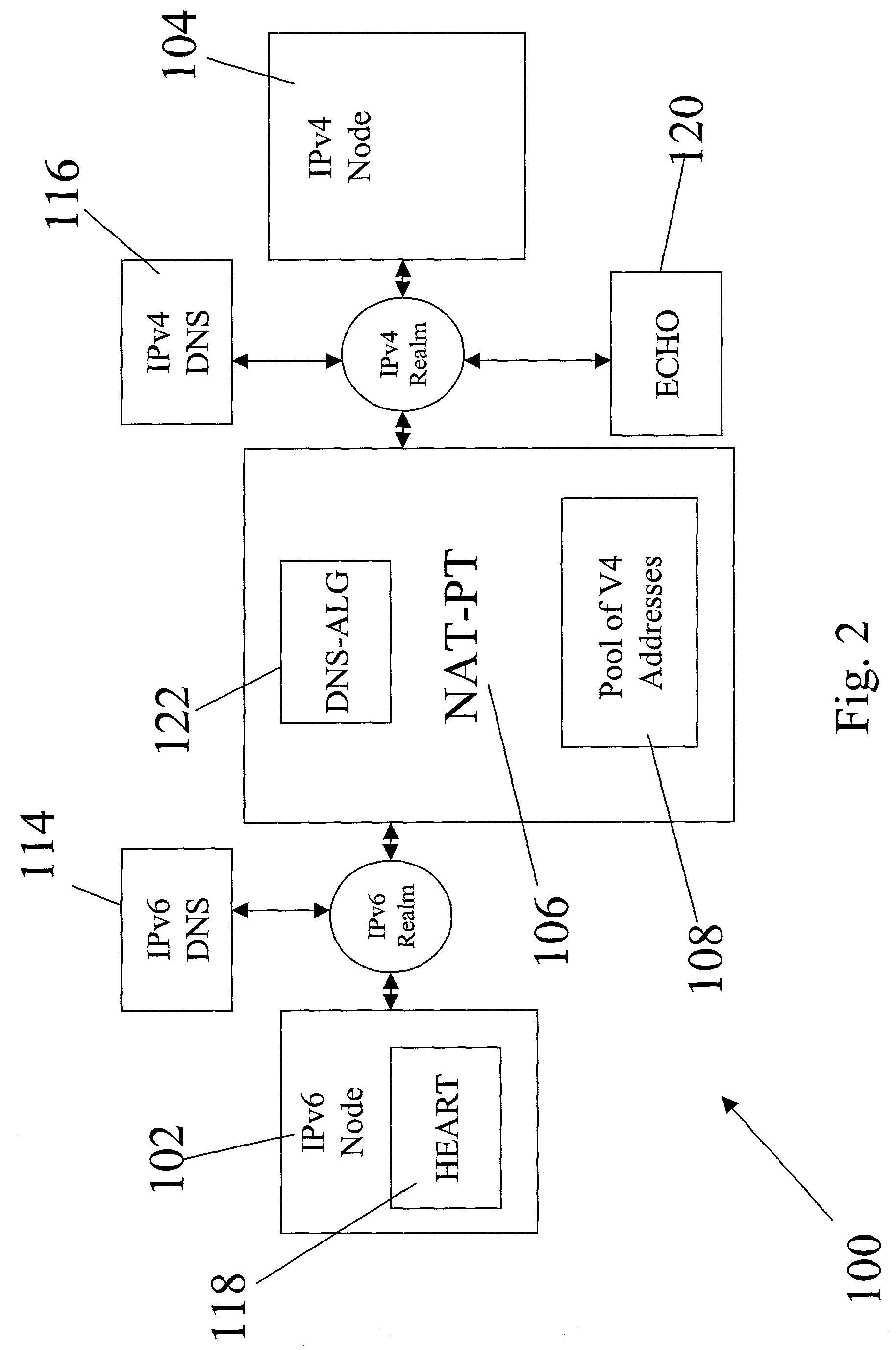Non-ALG approach for application layer session traversal of IPv6/IPv4 NAT-PT gateway
a technology of ipv6/ipv4 and gateway, applied in data switching networks, multiplex communication, digital transmission, etc., can solve the problems of ipv4 nodes not being able to correctly process the longer ipv6 ip addresses, packet data payload translation is often more complicated and burdensome, and the number of users of ip networks quickly exhausting the addresses provided by ipv4, etc., to achieve a simple and efficient technique
- Summary
- Abstract
- Description
- Claims
- Application Information
AI Technical Summary
Benefits of technology
Problems solved by technology
Method used
Image
Examples
Embodiment Construction
[0020]The problems noted above are solved in large part by a structure for coupling together addressably disparate nodes, such as IPv4 nodes and IPv6 nodes, without the use of an application level gateway. Instead, in accordance with a preferred embodiment of the invention, the system includes two executable applications, designated as HEART and ECHO in the following description, that avoid the necessity of an application level gateway. In general, HEART and ECHO cooperate with each other through a network address translator-protocol translator (NAT-PT) to cause the NAT-PT to temporarily assign an IPv4 address to a control session between the IPv4 and IPv6 nodes and also prevent the control session from timing out due to lack of timely communications between the IPv4 and IPv6 nodes.
[0021]In accordance with the preferred embodiment described below, HEART sends a HEARTBEAT message initially having an IPv6 source address (corresponding to HEART) through the NAT-PT to ECHO. The NAT-PT t...
PUM
 Login to View More
Login to View More Abstract
Description
Claims
Application Information
 Login to View More
Login to View More - R&D
- Intellectual Property
- Life Sciences
- Materials
- Tech Scout
- Unparalleled Data Quality
- Higher Quality Content
- 60% Fewer Hallucinations
Browse by: Latest US Patents, China's latest patents, Technical Efficacy Thesaurus, Application Domain, Technology Topic, Popular Technical Reports.
© 2025 PatSnap. All rights reserved.Legal|Privacy policy|Modern Slavery Act Transparency Statement|Sitemap|About US| Contact US: help@patsnap.com



